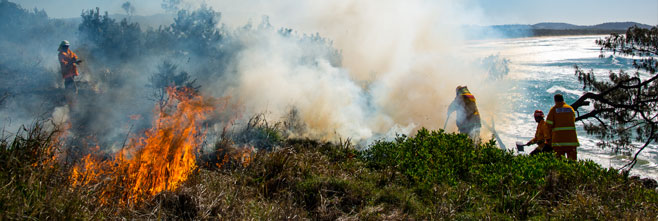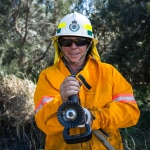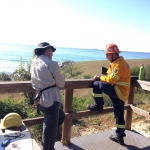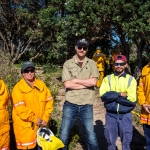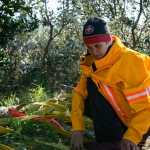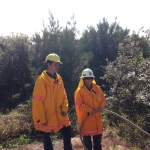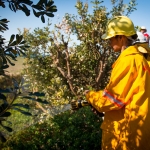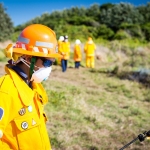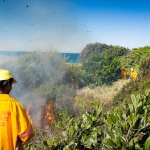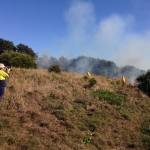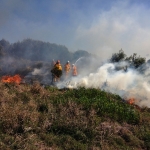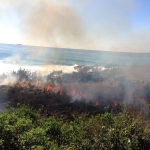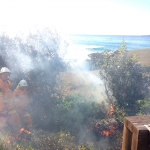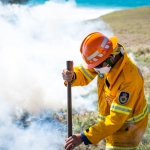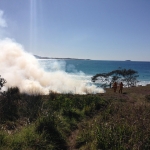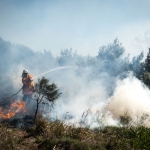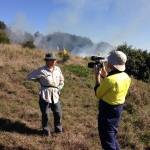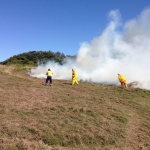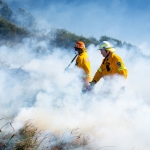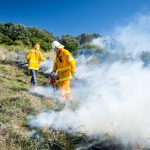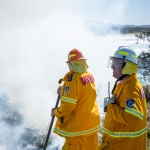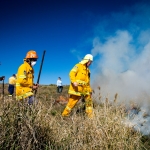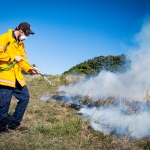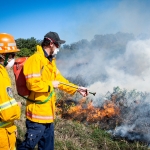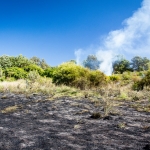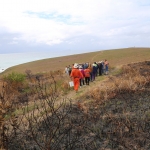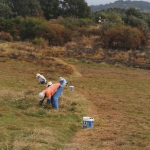On the 29th of July a prescribed burn was applied to a one-hectare area of invasive weeds at the Green Bluff headland near Moonee Beach, mid coast NSW. The Green Bluff Landcare group in collaboration with the Darrunda-Wajaarr Repair to Country Aboriginal Green Team from the Coffs Harbour Local Land Council, Moonee Beach Rural Fire Service (RFS), Department of Lands and National Parks worked together to manage weeds that are threatening the Themeda grasslands on the headland.
“We’re getting Aboriginal youth back on country- utilising fire like their ancestors did, looking after country. Fire was always a part of their culture, it continues to be and should continue into the future with more youth and Aboriginal people back on country. Using fire as a method of clearing country and looking after country”. Jamie Bertram, Community Safety Officer, NSW Rural Fire Service
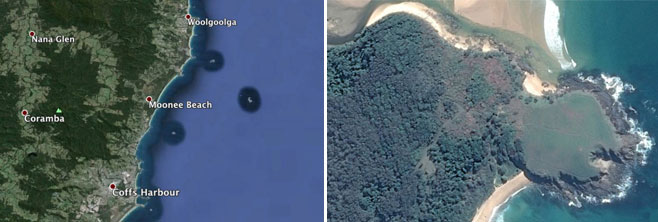
LHS: Location of Moonee Beach between Coffs Harbour and Woolgoolga; RHS: Green Bluff headland is located at the southern end of Moonee Beach
Three years after the initial application to burn, the right approvals and weather conditions were present and the burn went ahead successfully. Community support for the burn had grown over time and on the day there were 25 people present to assist the RFS with the burn. Various funding from all levels of government for the site over the past five years has enabled Green Bluff Landcare volunteers, under the guidance of Lindy Davis, to manage invasive weeds such as crofton, bitou bush, lantana and invasive grass like molasses and rhodes grass which have been encroaching into the native Themeda grass on the headland.
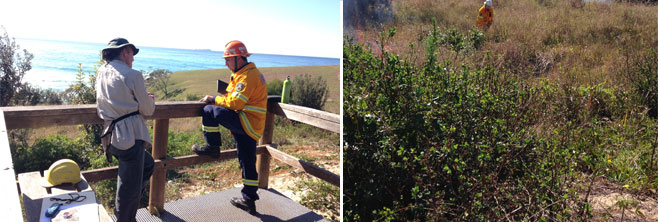
LHS: Professional bush regenerator and Landcare co-convener Lindy Davis and Jamie Bertram from RFS discuss the burn plan; RHS: Invasive grass- molasses and rhodes grass and weeds- bitou bush, lantana and crofton were targeted by the burn
Themeda grass headlands are an Ecologically Endangered Community and managing the weeds is crucial to the survival of the ecosystem. A vegetation management plan for the headland recommended the best way to manage the area most heavily dominated by invasive species was to do a prescribed ecological burn. The viewing platform on the headland was identified as an asset that required protection from wildfires. Approval was granted to create an asset protection zone so the RFS were contacted to support and manage the burn. While the burn was classified as an asset protection burn, the outcomes benefited biodiversity and cultural burning objectives.
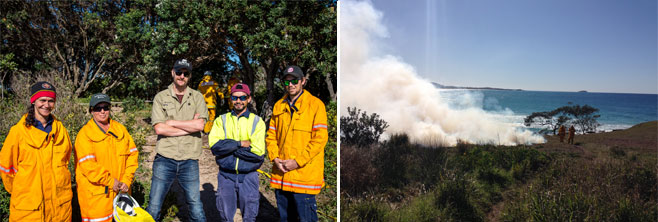
LHS: Darrunda-Wajaarr Repair to Country team and Firesticks Project Coordinator are ready for the burn; RHS: The burn was a success, controlled by Aboriginal rangers and RFS
Greg Elks, a senior ecologist set up two monitoring plots on the site for pre and post burn monitoring assessment. To get an idea of how the vegetation will respond to the fire he set the plots up in two different vegetation types, one in native Themeda grass, the other in an area full of introduced weedy grass. The plots will be assessed over 12 months to record any changes in ecology, and to quantify the regeneration results. Greg expects there could be up to a dozen species on the headland that need fire to regenerate.
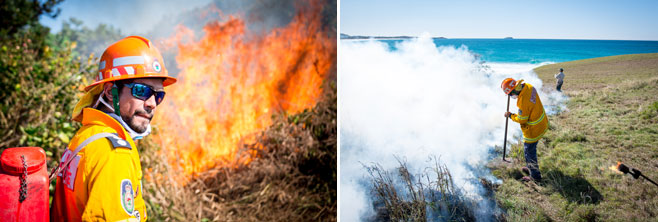
Aboriginal rangers from the Darrunda-Wajaarr Repair to country team manage the prescribed burn on Green Bluff Headland with Moonee Beach RFS
Now that the fire has cleared the headland the bush regenerators can easily access the site and manage any remaining weeds. This prescribed burn demonstrated that that there are many benefits from using fire as a management tool aside from asset protection including restoring cultural connections, weed management, native grassland restoration and additional biodiversity outcomes. Lindy Davis mentioned that the burn which took about 2hrs to complete would save approximately 200hrs of labour in manually removing and using herbicide on weeds. The Green Bluff Landcare group are hoping for further opportunities for collaboration to occur on other sea cliffs and coastal headlands in the future as there are many that require ongoing management due to incorrect fire regimes and weed encroachment. The group feels optimistic that the positive results from the burn will encourage other groups to look at opportunities to use fire as a restoration tool. The Firesticks project is thrilled to share this story and look at opportunities to support and collaborate in the future.
Click here for link to more information about Themeda grasslands Endangered Ecological Communities


